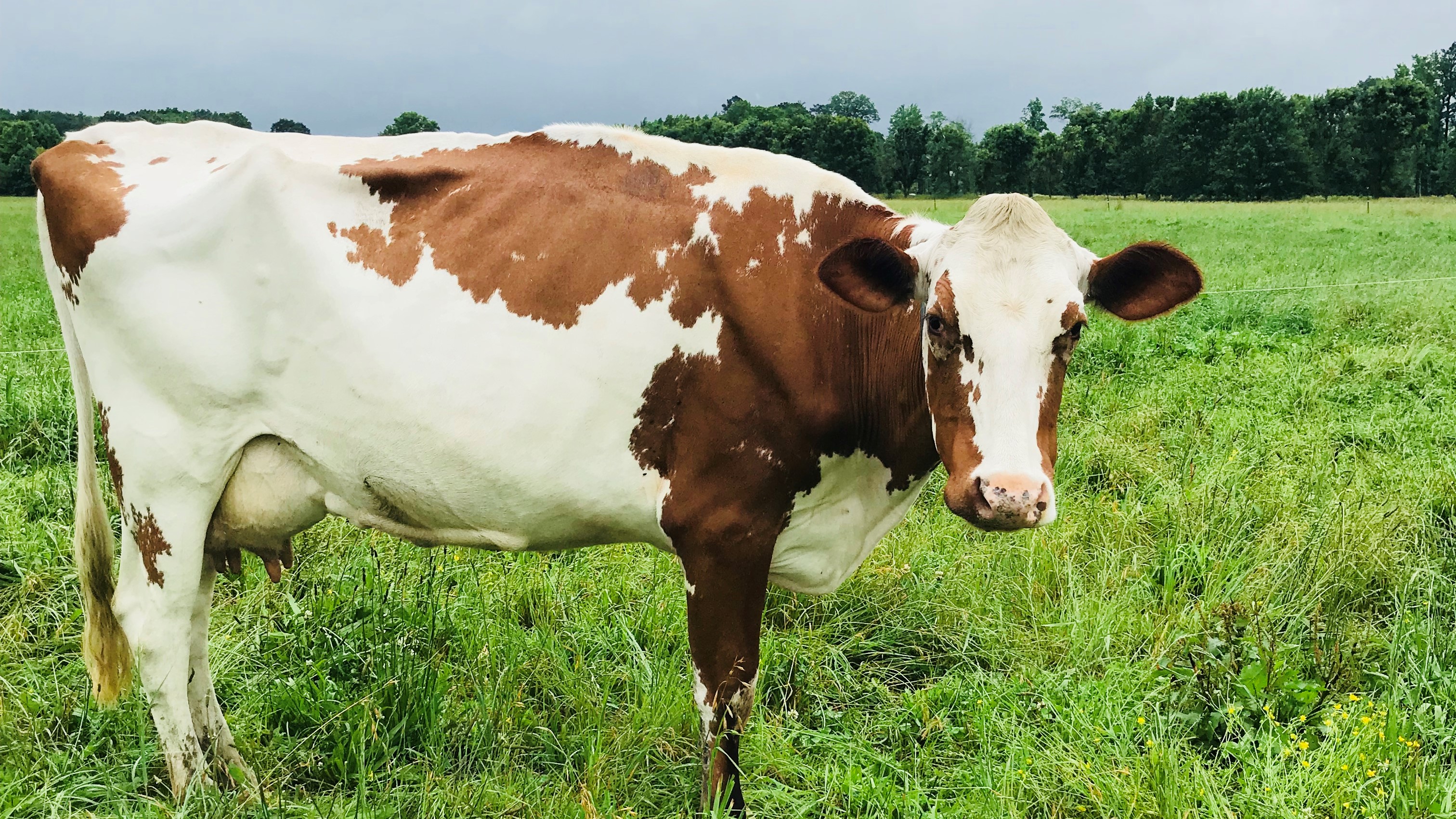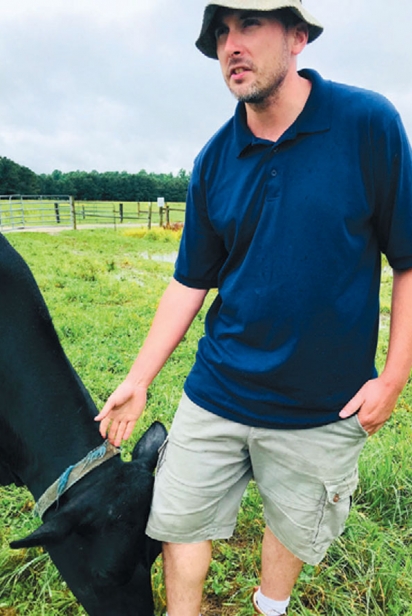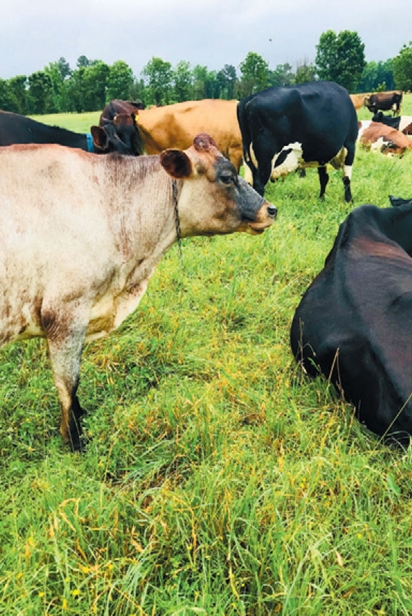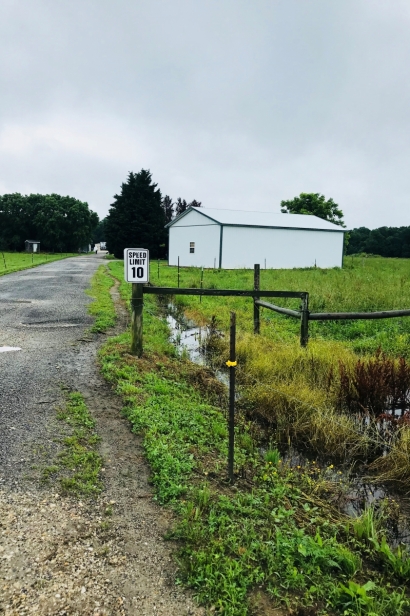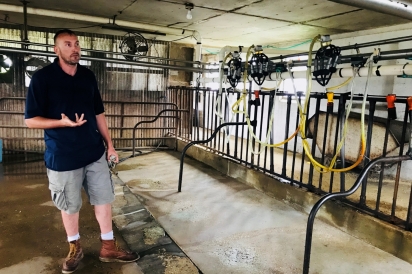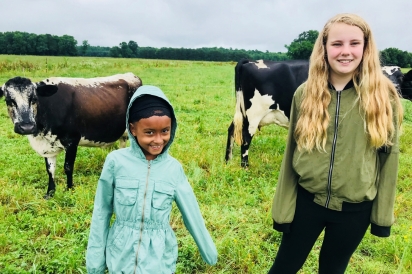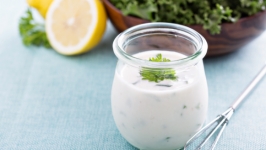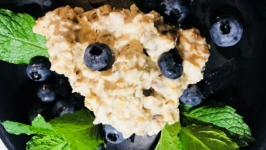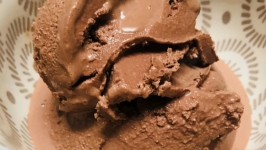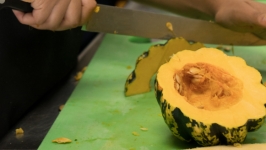A Visit to Nice Farms Creamery
Chef Gretchen Hanson’s visit to Nice Farms Creamery and sixth-generation dairy farmer Bob Miller is a master class in the importance of sustainable agriculture on the Eastern Shore. And inspiration for a brunch menu!
Bob Miller gets up early. Really, really early. In order to be there for the first milking, I have left my warm and snuggly bed, loaded my sleepy child in the backseat and gone to pick up my friend Kristen and her granddaughter Brianna. It is four a.m. by the time we are at his farm in Federalsburg, Maryland. I am simultaneously struggling to wake up with my triple shot espresso, and to find his farm nestled in the rural valley. The difference between Bob’s farm and the myriad of other dairy farms I have toured in my years as a chef is apparent the minute I open the door. No telltale smell. In fact, it smells like earth, freshly washed with last night’s rain.
Kristen and I exit the car, leaving our two girls nestled asleep in the back seat. Bob has asked us to be completely silent as we tour the milk production shed. The process is quick. Eight cows at a time, maybe ten batches of cows at most. There are only 100 cows on this two-hundred-acre farm. About one fifth of them are “dry,” meaning they are not producing. It is extremely quiet as the half dozen farm hands, who are all members of the family, work swiftly and move the cows in and out of the dark shed. There is no early morning sun yet streaking the sky, and it is completely dark inside with only a small yellow light bulb on the wall by which to work. I want to ask him questions about the herd, but it feels as if I am in church. Bob has asked me not to use my flash as it would disrupt the process, which takes less than half the time you would expect, and the only images I have captured are black and blank squares on my cell phone.
We move outside of the milking shed into the pasteurization room. The early morning sun is making her first appearance through the dusty windows and I can see the gently rolling hills and lush greenery surrounding us. I ask him why he has so few cows.
“Each cow requires two acres of land to truly be grass fed,” Bob explains. “We move the cows up to four times a day into different parts of the pasture so they always have a lush variety of vegetation. We reseed and rotate the fields constantly. The only time they ever get grain is when the greenery is not as abundant in the winter. You can taste the difference in everything we do. Compare this milk to just about anything else you have ever had and you will see why we do it this way.”
He’s right. The milk is sweet and sublime and our sleepy children have joined us in the milking shed. My daughter, Hadyn, takes a sip. “Mom this is really good!” she says with surprise and, although not much of a milk drinker, downs the rest of the 8-ounce glass bottle. All the fat is left in this milk, making it much richer in Omega-3 and beta carotene. She doesn’t need to know the nutritional information or how the pasteurization process is as gentle as Bob can make it. She just knows it is good.
The milking and pasteurization is completely finished by six am, and the sun up. We tour the grasslands and herd surrounding the farm. The cows are all different colors and types: there are Jerseys, Dutch Belteds, and New Zealand Freelands. Bob has chosen his herd to be small, agile animals with a mixture of breeds for the intensive grazing style he believes is vital for a healthy and sustainable form of agriculture.
“We plant different varieties of seeds year-round for the cows to graze on and the result is that we have so many more bees,” he says. “We don’t plow and we allow the manure to work its way into the soil over a large area, meaning much less runoff into the watershed of the Chesapeake.”
Bob comes from six generations of dairy farmers and his passion is evident as we trek through the fields. “Every day that goes by, our society gets further and further from farm to fork,” he says. “I go to farmers markets and tell people what I do and why sustainable agriculture is so important.”
Kristen and our two little ones pepper him with so many questions I have a hard time keeping up with my note writing. ‘Clover, Millet, Cowpeas,’ I furiously scribble. What were the other six types of seeds he mentioned? Hadyn and Bob have moved into the herd of cows and are being nudged and rubbed by a variety of the beasts. Hadyn is my animal whisperer, always finding herself in the midst of any group animals both large and small. I am not worried. I’ve seen her wade her way into groups of strange beasts before, bringing animals towards her by her serene calmness. She and Bob work their way up and down the small herd, rubbing the hard, bony heads and stroking soft cheeks. At one point she has cows rubbing and butting her from three different sides. She lays her hands on their flanks and whispers softly. I cannot hear what she is saying over the morning bird calls, but the animals are mesmerized.
Even as the sky begins to darken and rain, we explore the multiple pastures Bob rotates the cows through and note the tree line that helps prevent runoff into the Chesapeake. Everywhere the differences between this farm and one that produces a monoculture is evident. Bees and worms abound in each small patch of ground. Birds swoop in and out of the lush green meadows that have never been sprayed with insecticide.
While we have been touring the farm, Bob’s family have been loading the ice cream truck and the refrigerated truck filled with milk bottles and butter. Four days out of seven, Nice Farms Creamery is at a market somewhere on the Delmarva Peninsula. We have been here for three hours and I am ready to go home and take a nap, but Bob’s day has barely begun. We bid our goodbyes to the cows, the kittens and the family, and Bob gives us a pint of Cookies and Cream ice cream for breakfast along with some vanilla yogurt. The yogurt is sweet without being filled with sugar, just the tart undertones of pure fresh yogurt. I never get to taste the ice cream, because by the time I remember to ask for a bite all that’s left is smeared on two little faces in the back seat.
> Nice Farms Creamery: 25786 Auction Rd, Federalsburg, Maryland; 410.829.4456
Find Nice Farms Creamery at these farmers’ markets
Camden Avenue Farmers Market,Salisbury MD, Tuesdays 2:30–6pm
Kent Island Farmers Market, Kent Island MD, Thursdays 3:30 –6:30pm
Historic Lewes Farmers Market, Lewes DE, Saturday 9am–12pm
Anne Arundel County Farmers Market, Annapolis MD, Sundays 10am–1pm


